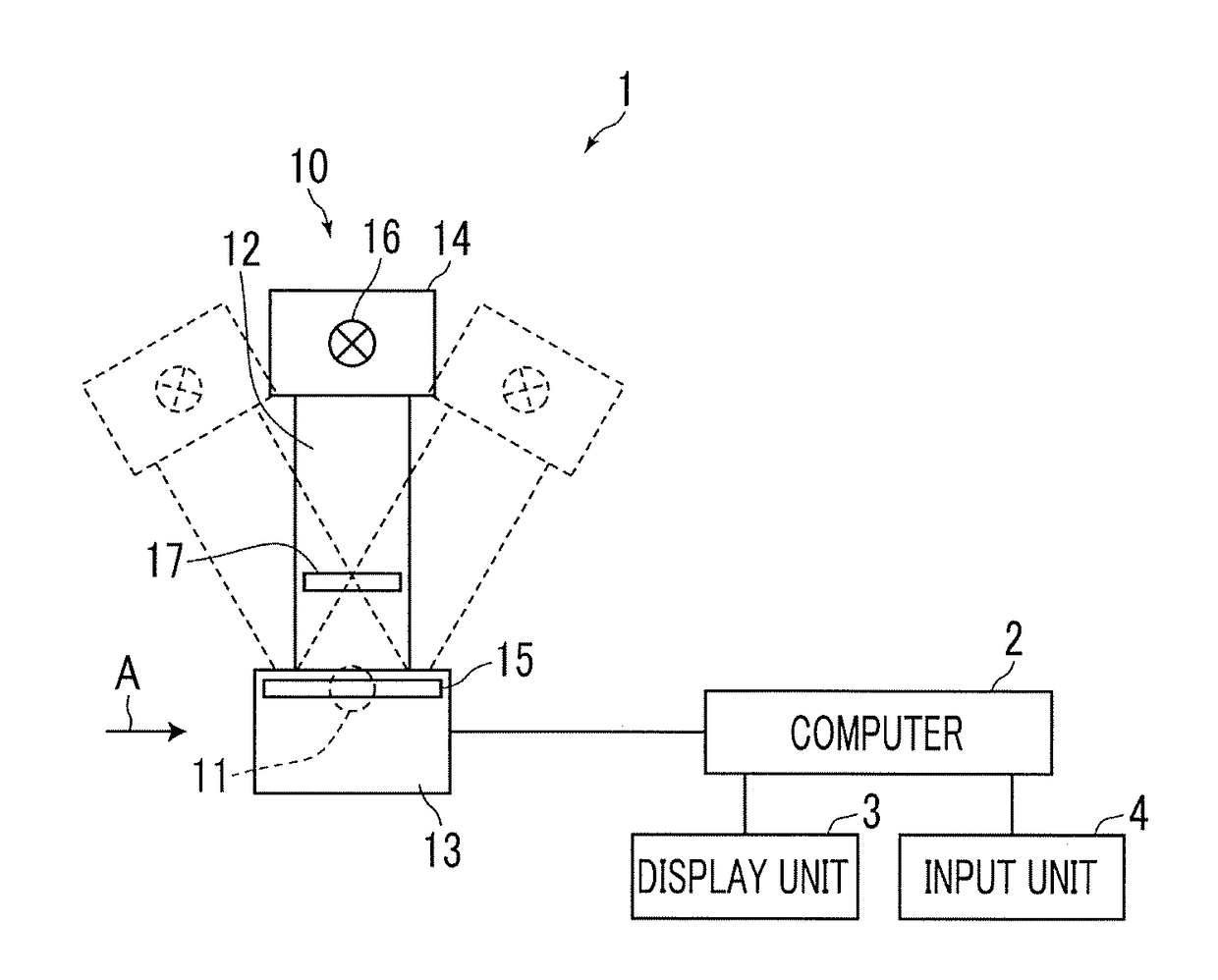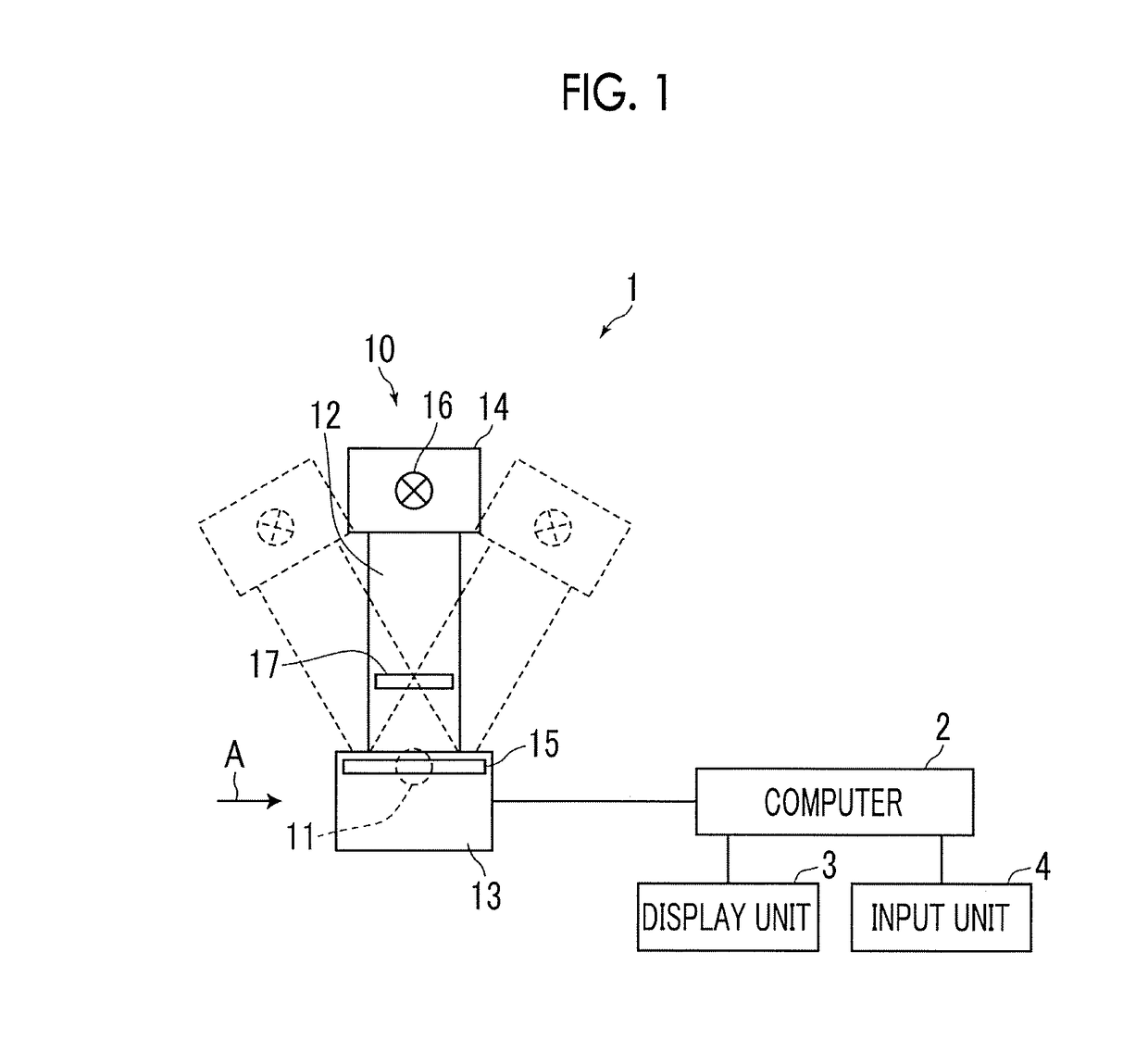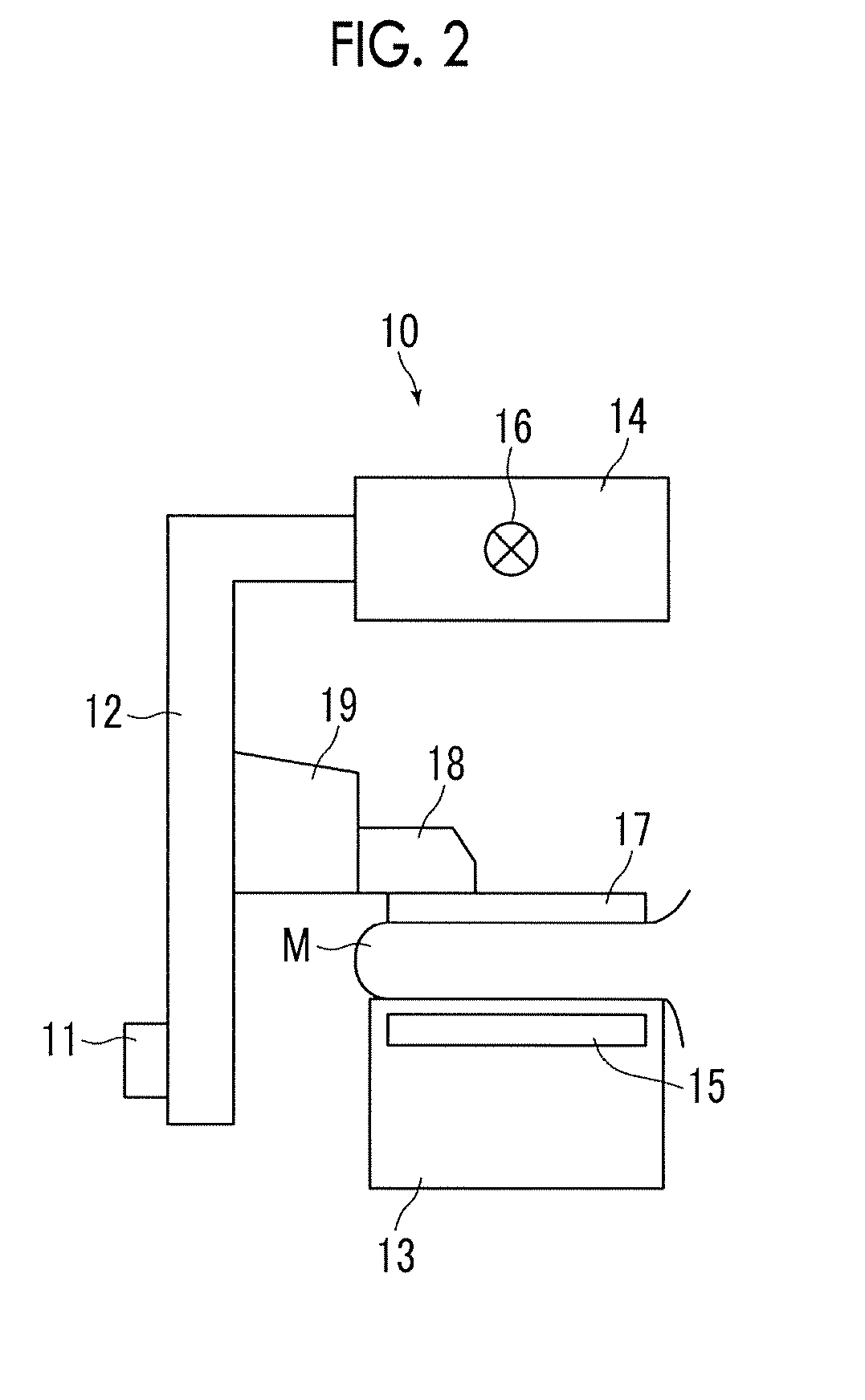Image processing apparatus, method, and program
- Summary
- Abstract
- Description
- Claims
- Application Information
AI Technical Summary
Benefits of technology
Problems solved by technology
Method used
Image
Examples
first embodiment
[0063]Hereinafter, embodiments of the invention will be described with reference to the accompanying diagrams. FIG. 1 is a schematic configuration diagram of a radiation image capturing apparatus to which an image processing apparatus according to the invention is applied, and FIG. 2 is a diagram of the radiation image capturing apparatus when viewed from the direction of arrow A in FIG. 1. A radiation image capturing apparatus 1 is a mammography imaging apparatus that acquires a plurality of radiation images, that is, projection images, by imaging a breast M (hereinafter, also referred to as a subject M) from a plurality of radiation source positions having different imaging directions in order to generate a tomographic image by performing tomosynthesis imaging of the breast. As shown in FIG. 1, the radiation image capturing apparatus 1 includes an imaging unit 10, a computer 2 connected to the imaging unit 10, and a display unit 3 and an input unit 4 connected to the computer 2.
[0...
second embodiment
[0102]In the second embodiment, the frequency synthesizing unit 35 enlarges the band synthesized two-dimensional image W0-3·GpL-3 of the third frequency band twice by interpolation operation, and adds up the enlarged band synthesized two-dimensional image W0-3·GpL-3 of the third frequency band and the band synthesized two-dimensional image W0-2·GpL-2 of the second frequency band to generate a composite two-dimensional image Gp-2. Then, the frequency synthesizing unit 35 enlarges the composite two-dimensional image Gp-2 twice, and adds up the enlarged composite two-dimensional image Gp-2 and the band synthesized two-dimensional image W0-1·GpL-1 of the first frequency band to generate a composite two-dimensional image Gp-1. Then, the frequency synthesizing unit 35 enlarges the composite two-dimensional image Gp-1 twice, and adds up the enlarged composite two-dimensional image Gp-1 and the band synthesized two-dimensional image W0-0·GpL-0 of the 0-th frequency band to generate a compos...
third embodiment
[0108]In the third embodiment, in the processing shown in FIG. 12, the weighting coefficient W0 for the band synthesized two-dimensional image GpL-0 of the highest frequency band is set to 0, so that the component of the band synthesized two-dimensional image GpL-0 of the highest frequency band is not included in the composite two-dimensional image Gp. A weighting coefficient larger than 0 may be used as long as the weighting coefficient is a relatively low value. In addition, the weighting coefficient Wk for the band synthesized two-dimensional image GpL-k of a plurality of frequency bands that can be regarded as noise, such as not only the highest frequency band but also a frequency band next to the highest frequency band or even the next frequency band, may be reduced.
[0109]In this manner, by generating the composite two-dimensional image Gp by reducing the weighting of the band synthesized two-dimensional image from the highest frequency band to the predetermined frequency band,...
PUM
 Login to View More
Login to View More Abstract
Description
Claims
Application Information
 Login to View More
Login to View More - R&D
- Intellectual Property
- Life Sciences
- Materials
- Tech Scout
- Unparalleled Data Quality
- Higher Quality Content
- 60% Fewer Hallucinations
Browse by: Latest US Patents, China's latest patents, Technical Efficacy Thesaurus, Application Domain, Technology Topic, Popular Technical Reports.
© 2025 PatSnap. All rights reserved.Legal|Privacy policy|Modern Slavery Act Transparency Statement|Sitemap|About US| Contact US: help@patsnap.com



